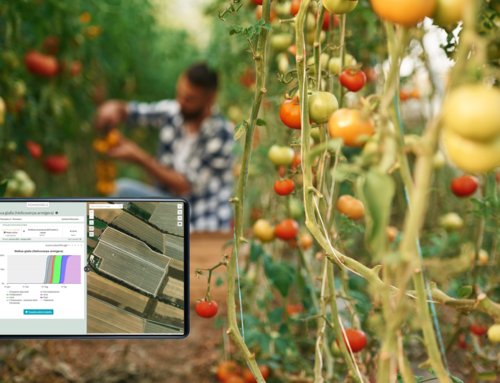Talking about olive groves, the insect that is of most concern for the identification of the appropriate control strategy is the olive fly (Bactrocera oleae).
Olive fly females lay their eggs inside the drupes, causing damage to the flesh as a result of the larvae’ trophic activity and causing the premature fall of the affected fruits. The damage consists both in the decrease of the harvestable production and in the negative effects on the quality of the oil obtained with the infested olives.
In years with insect-friendly climatic conditions, the infestation of the fruit can lead to a reduction in production and a high deterioration in the quality of the oil: the result is an economic damage affecting the entire production chain.
Temperature: a crucial factor
Temperature is the abiotic factor that most influences the insect cycle, determining survival and rate of development. There are high variations in the intensity of the olive fly attack on a spatial scale (areas with different climates) and on a temporal scale (weather patterns that vary greatly from one year to another).
In the Mediterranean area, global projections confirm the climate change underway and the signals are clearly perceptible in the extreme variability observed in recent years; for example, in Italy, regional scale models indicate an increase in temperatures in all seasons, with a maximum in the summer period and a minimum in the winter period.
The importance of forecast models for olive fly control
Forecast models are a very useful tool for determining risk in the phytosanitary field, as it allows to better understand and predict the dynamics of insect populations; it is even more useful when talking about changes affecting both the climatic-environmental aspect and, consequently, the management practices to adapt to these changes.
The use of forecast models is a valid support in warning systems for the decisions that must be taken daily by technicians and olive growers. The climatic differences that are observed even in consecutive years make the decision-making process more difficult, since the value of the experience acquired in previous years is reduced.
Forecast models, based on meteorological data, are an important support to decisions, as they allow to:
- run simulations on the development cycle
- estimate the risk of attack on the basis of weather conditions and specific crop data
Practical indications are then obtained on the critical phases and periods, so that it is possible to define the moments of greatest risk in which it is essential to monitor more closely the field and to carry out an effective olive fly control.
Do you want to know the specific features for olive tree in Agricolus platform?







